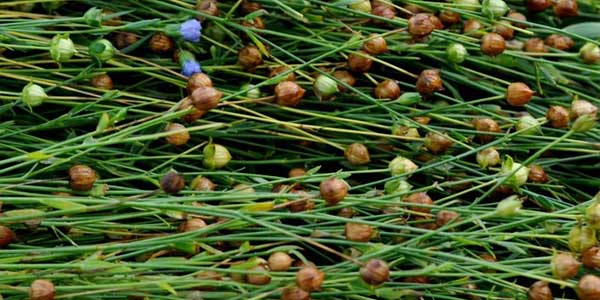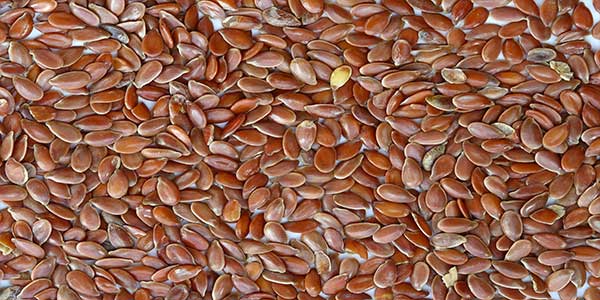Introduction:
Flax seeds, also known as linseeds or alsi in some regions, are tiny, nutrient-rich seeds that have gained popularity in recent years due to their numerous health benefits. These seeds have a long history of use, dating back thousands of years, and are widely recognized for their versatility in cooking and potential positive effects on overall well-being. In this article, we will explore the details of flax seeds, including their uses, qualities, origin, sources, production process, applications in cooking, health benefits, how to use them, and potential side effects.
Origins and Sources of Flax Seeds:
Flax seeds are derived from the flax plant (Linum usitatissimum), which is native to the Mediterranean region. The plant has been cultivated for its fiber and seeds for thousands of years and is now grown in various parts of the world, including Canada, China, Russia, and India. These are typically harvested from the mature flax plant when the seed capsules turn brown and begin to dry out. These seeds are then collected and used for various purposes, including culinary applications.

Qualities and Nutritional Composition of Flax Seeds:
Flax seeds are small, oval-shaped seeds that are available in different colors, including brown and golden varieties. They have a mild, nutty flavor and a slightly crunchy texture. They are rich in essential nutrients and are an excellent source of dietary fiber, healthy fats, and various beneficial compounds. Here are some key nutritional components:
a) Omega-3 Fatty Acids: Flax seeds are one of the best plant-based sources of omega-3 fatty acids, particularly alpha-linolenic acid (ALA). Omega-3 fatty acids are known for their role in supporting heart health and reducing inflammation in the body.
b) Dietary Fiber: Flax seeds are an excellent source of dietary fiber, both soluble and insoluble. This fiber content promotes healthy digestion, aids in bowel regularity, and may help manage weight and control blood sugar levels.
c) Lignans: Rich in lignans, which are phytochemicals with antioxidant properties. Lignans have been associated with potential health benefits, including hormonal balance and protection against certain types of cancer.
d) Protein: Contains a considerable amount of plant-based protein, making them a valuable addition to vegetarian and vegan diets. Protein is essential for muscle growth and repair, as well as overall health and wellness.
e) Vitamins and Minerals: Flax seeds are a good source of vitamins and minerals, including vitamin E, thiamine, magnesium, and manganese.
Production Process of Flax Seeds:
a) Cultivation: Flax plants are typically grown in cooler climates, where they thrive in well-drained soil with moderate moisture levels. The plants are sown in the spring and reach maturity in approximately 100 days. They require regular watering and careful management to ensure optimal growth.
b) Harvesting: Flax plants are ready for harvest when the lower leaves turn yellow and the capsules containing the seeds begin to dry out. The plants are uprooted, and the seed capsules are carefully collected.
c) Drying and Threshing: Once harvested, the seed capsules are spread out to dry in a well-ventilated area. The drying process allows the capsules to open naturally, facilitating the removal of the seeds. Once dry, the capsules are threshed to separate the seeds.
d) Cleaning and Packaging: The separated seeds are then cleaned to remove any debris or impurities. The cleaned seeds are packed and stored in a cool, dry place to maintain their freshness and quality.

Culinary Uses and Applications of Flax Seeds:
Flax seeds have a wide range of culinary applications and can be incorporated into various dishes to enhance both flavor and nutritional value. Here are some common ways to use in cooking:
a) Ground Flax Seeds: Grinding into a fine powder enhances their digestibility and allows for easier absorption of nutrients. Ground flax seeds can be added to baked goods such as bread, muffins, cookies, and pancakes. They can also be used as a topping for oatmeal, yogurt, or smoothies.
b) Flaxseed Oil: Flaxseed oil, which is extracted from seeds, can be used as a healthy alternative to other cooking oils. It has a low smoke point, so it is best used in salad dressings, dips, or drizzled over cooked vegetables.
c) Flax Egg Substitute: Can be used as a vegan substitute for eggs in baking. To make a flax egg, mix one tablespoon of ground flax seeds with three tablespoons of water and let it sit for a few minutes until it forms a gel-like consistency. This mixture can then be used as an egg replacement in recipes.
d) Flax Seed Sprinkle: Toasted seeds can be used as a topping or seasoning for salads, soups, stir-fries, or roasted vegetables. They add a nutty flavor and a pleasant crunch to dishes.
e) Flax Seed Porridge: Can be added to porridge or hot cereal to boost its nutritional content. Simply sprinkle a tablespoon or two of ground flax seeds into your cooked cereal and stir well.
Health Benefits of Flax Seeds:
Flax seeds offer a range of potential health benefits due to their nutrient profile and bioactive compounds. While more research is needed to fully understand their effects, here are some potential health benefits associated with the consumption of flax seeds:
a) Heart Health: The omega-3 fatty acids found in flax seeds have been linked to improved heart health. They can help reduce inflammation, lower blood pressure, and promote healthy cholesterol levels.
b) Digestive Health: The high fiber content of can support healthy digestion and prevent constipation. The soluble fiber in it also acts as a prebiotic, promoting the growth of beneficial gut bacteria.
c) Hormonal Balance: The lignans in flax seeds have been shown to have estrogen-like properties, which may help regulate hormone levels in the body. This can be particularly beneficial for women experiencing menopausal symptoms.
d) Blood Sugar Control: Have been found to have a positive impact on blood sugar control. The soluble fiber can slow down the digestion and absorption of carbohydrates, helping to stabilize blood sugar levels.
e) Weight Management: The combination of fiber, protein, and healthy fats in it can promote satiety and reduce appetite, making them a valuable addition to a weight management plan.
f) Skin Health: The omega-3 fatty acids and antioxidants in flax seeds can help promote healthy skin by reducing inflammation and protecting against oxidative stress.
How to Use Flax Seeds:
To make the most of the nutritional benefits of it, it’s important to use them correctly. Here are some tips on how to use effectively:
a) Buy Whole Seeds: It is best to purchase whole seeds and grind them as needed to maintain their freshness and nutrient content. Whole seeds can be stored in an airtight container in a cool, dark place for up to a year.
b) Grind Before Use: To maximize the digestibility and nutrient absorption, grind them before use. You can use a coffee grinder, blender, or mortar and pestle to grind the seeds into a fine powder.
c) Store Ground Flax Seeds: Once ground, should be stored in an airtight container in the refrigerator to prevent oxidation and maintain their nutritional quality. Ground seeds are best used within a few weeks.
d) Use in Recipes: Add ground seeds to recipes for baked goods, smoothies, yogurt, oatmeal, or as a topping for salads and vegetables. Start with a small amount and gradually increase the quantity to suit your taste preferences.
e) Stay Hydrated: Flax seeds absorb liquid, so it’s important to drink enough water when consuming them to prevent any digestive discomfort.

Potential Side Effects and Precautions:
While generally safe for most people when consumed in moderation, there are a few considerations to keep in mind:
a) Allergic Reactions: Some individuals may be allergic to these seeds. If you experience any symptoms such as itching, swelling, or difficulty breathing after consuming, seek medical attention immediately.
b) Digestive Issues: The high fiber content can cause digestive discomfort, such as bloating or gas, in some individuals. It is recommended to start with a small amount and gradually increase the intake to allow your body to adjust.
c) Medication Interactions: Flax seeds may interact with certain medications, including blood thinners, hormone therapies, and cholesterol-lowering drugs. If you are taking any medications, consult with your healthcare provider before incorporating flax seeds into your diet.
d) Pregnancy and Breastfeeding: Flax seeds are generally considered safe during pregnancy and breastfeeding when consumed in moderation. However, it’s advisable to consult with a healthcare professional for personalized recommendations.
Conclusion:
Flax seeds, also known as linseeds or alsi, are versatile and nutrient-rich seeds that offer numerous health benefits. From their origins and sources to their culinary uses, production process, and potential side effects, flax seeds have a lot to offer in terms of nutrition and flavor. By incorporating them into your cooking and meal preparation, you can enjoy their nutty taste and reap the potential health benefits they provide. Remember to start with small amounts and gradually increase your intake to assess your body’s tolerance. With their abundance of essential nutrients and beneficial compounds, can be a valuable addition to a healthy and balanced diet.
Note: The information provided in this article is for informational purposes only and should not be considered as medical advice. If you have any specific health concerns or questions, please consult with a healthcare professional.
References:
Omega-3 fatty acids: Fact sheet for health professionals. National Institutes of Health. Retrieved from https://ods.od.nih.gov/factsheets/Omega3FattyAcids-HealthProfessional/
Thompson, L. U. (2003). Potential health benefits and problems associated with antinutrients in foods. Food Research International, 35(2-3), 123-140.
Prasad, K. (2014). Lignans: chemical, biological and clinical properties. CRC Press.
Bloedon, L. T., Balikai, S., Chittams, J., Cunnane, S. C., Berlin, J. A., Rader, D. J., & Szapary, P. O. (2008). Flaxseed and cardiovascular risk factors: results from a double-blind, randomized, controlled clinical trial. Journal of the American College of Nutrition, 27(1), 65-74.
Torkan, M., Entezari, M. H., Siavash, M., & Roshanak, M. (2014). Effect of flaxseed oil on serum systemic and vascular inflammation markers and oxidative stress in hemodialysis patients: a randomized controlled trial. International Journal of Preventive Medicine, 5(11), 1407-1415.
Edel, A. L., Rodriguez-Leyva, D., & Pierce, G. N. (2013). Dietary flaxseed independently lowers circulating cholesterol and lowers it beyond the effects of cholesterol-lowering medications alone in patients with peripheral artery disease. Journal of Nutrition, 143(9), 140-145.